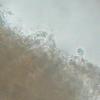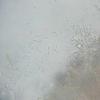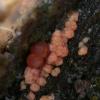
07-12-2025 16:07
Arnold BüschlenHallo, ich habe in einer Moos-Aufsammlung (epiohy

05-12-2025 17:33
 Bruno Coué
Bruno Coué
Bonjour, je serais heureux de recueillir votre avi

07-12-2025 09:24
De la pasada semana en Galicia EspañaEn el suelo

06-12-2025 00:19
 Viktorie Halasu
Viktorie Halasu
Hello, would anyone have this article, please? An

02-12-2025 18:59
This pair of ascos 2.5cm across were on recently b

02-12-2025 19:25
Buckwheat PeteHello, can anyone identify this hairy fungus growi
Ascocoryne solitaria?
Ismael Wind,
05-11-2011 10:55
Neven Matocec,
05-11-2011 11:29

Re : Ascocoryne solitaria?
Hi Ismael!
Yes, first one (represented only with the anamorph) is A. solitaria. Anamorphic fruitbody is specific (capitate-stipitate, not flabellate, clavate or cerebriform) and swollen conidiophores. Considering the second Ascocoryne collection: Can you still check whether there might be some anamorph somewhere the substrata. If you find any that would mean that you have either A. sarcoides or some closely related nomina prov. Anyway, ascospore guttulation clearly exclude small group of species centred around A. cylichnium (your spores are with symmetrically arranged lipid bodies, not multiguttulate).
Yes, first one (represented only with the anamorph) is A. solitaria. Anamorphic fruitbody is specific (capitate-stipitate, not flabellate, clavate or cerebriform) and swollen conidiophores. Considering the second Ascocoryne collection: Can you still check whether there might be some anamorph somewhere the substrata. If you find any that would mean that you have either A. sarcoides or some closely related nomina prov. Anyway, ascospore guttulation clearly exclude small group of species centred around A. cylichnium (your spores are with symmetrically arranged lipid bodies, not multiguttulate).
Ismael Wind,
05-11-2011 22:58
Re : Ascocoryne solitaria?
Thanks Neven! Unfortuanally i cannot check that anymore. As far as i can remember there were also little stalked ones but not certain. But i'm already very happy with the first one.
greetings Ismael
greetings Ismael
Neven Matocec,
06-11-2011 08:35

Re : Ascocoryne solitaria?
Yes, not to forget! Stip just reminded me on A. inflata. This is the species usually found in very humid areas on very rotten wood remnants of Fraxinus, Fagus, Alnus...my collections are mostly from Fagus, but there are single finds on Carpinus, Acer and Quercus...anyway always on broadleaved tree species, never on conifers as far as I can see!
The species has small sessile cerebelloid non gelatinous pale rosy to pale purpuraceous anamorph that can easily be overlooked when not abundant.
Anyway, A. inflata is differentiated from A. sarcoides by somewhat larger spores with subacute ends (A. sarcoides has obtuse spore ends), much broader conidia from ascospore germ tubes - 3,2-3,6 micr. vs. 1,8-2,8 micr. (you can get them very easily by letting some mature apothecia to get aged in constant humid atmosphere - in closed moistened box - if germinated ascospores are not readily present in collected material), by capitate paraphysal end cells (well over 3,5 micr.), by sessile cushion-shaped apothecia, much smaller anamorphic fruitbodies (up to 1 mm high) etc...
But still, there are few other apparent nomina prov. that must be evaluated in a separate study...
Cheers,
N.
The species has small sessile cerebelloid non gelatinous pale rosy to pale purpuraceous anamorph that can easily be overlooked when not abundant.
Anyway, A. inflata is differentiated from A. sarcoides by somewhat larger spores with subacute ends (A. sarcoides has obtuse spore ends), much broader conidia from ascospore germ tubes - 3,2-3,6 micr. vs. 1,8-2,8 micr. (you can get them very easily by letting some mature apothecia to get aged in constant humid atmosphere - in closed moistened box - if germinated ascospores are not readily present in collected material), by capitate paraphysal end cells (well over 3,5 micr.), by sessile cushion-shaped apothecia, much smaller anamorphic fruitbodies (up to 1 mm high) etc...
But still, there are few other apparent nomina prov. that must be evaluated in a separate study...
Cheers,
N.
Stip Helleman,
06-11-2011 11:31
Ismael Wind,
10-11-2011 15:18
Re : Ascocoryne solitaria?
its more probably a sarcoides. The parafysen for instance are certainly not over 3. It is also the most likely one since solitaria is mostly restricted to broadleaved trees








